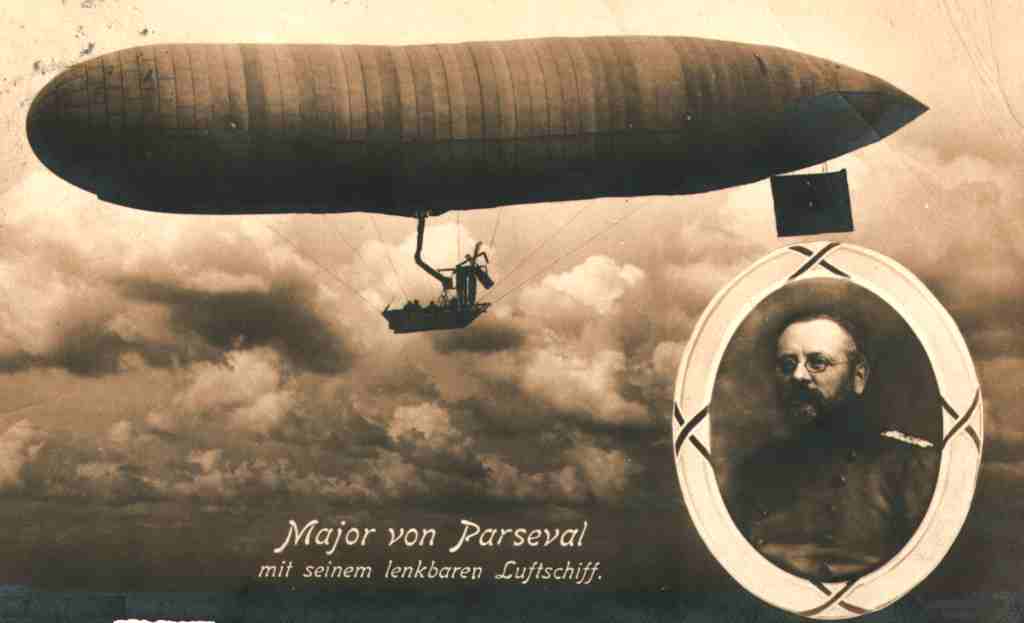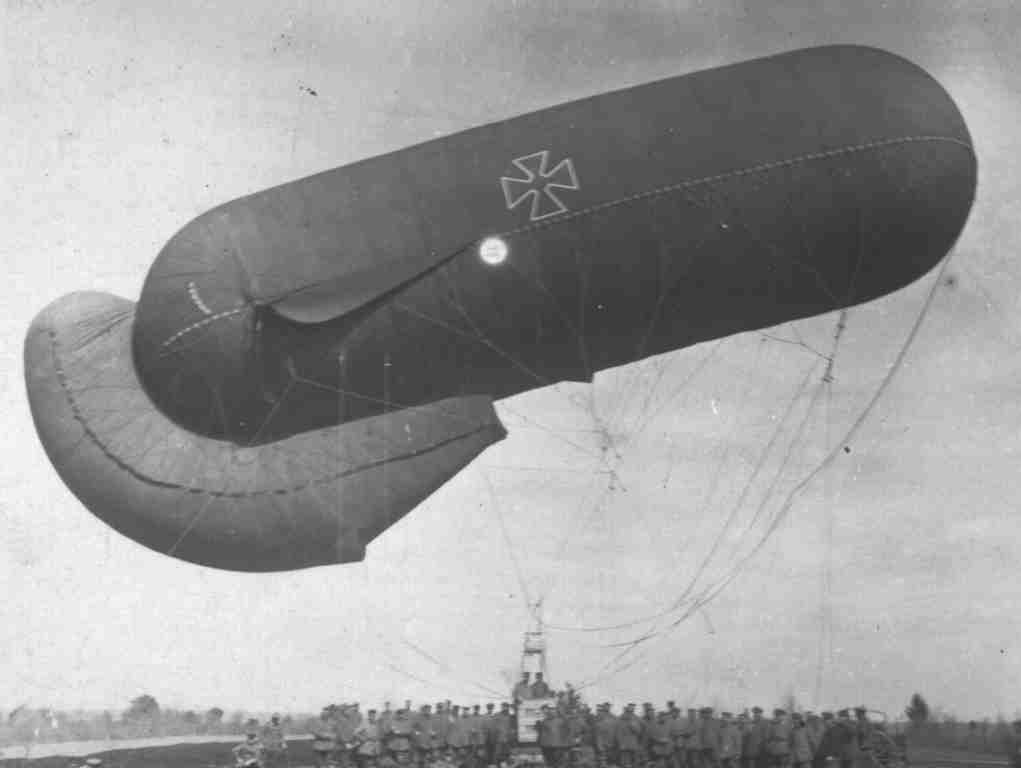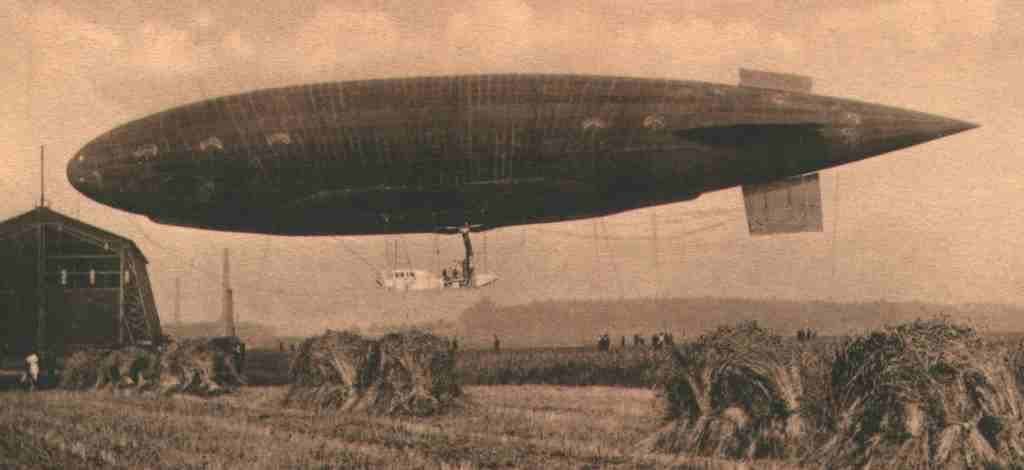|
Information about "Parseval-Airships" |
||||||||||||

The
airships by August von Parseval rank as the predecessor of the blimps
of the present. A.
von Parseval, born on February 5th 1861, tinkered since 1890 in
corporation with the engineer Hans Bartsch
von Sigsfeld and the businessman August Riedinger at the construction
and the building of an
airship. This plan did not become real, too many problems couldn't
be solved at this time. So they
constructed some other balloons for military observation - the "Dragonballoons"
(Drachenballone)

In
1901 he started constructing an airship (with engines aboard), which
did its first flight on the Mai 26th, 1906 at
Berlin.
The basic principle and the easy method of construction were really reliable. Many other types had been developed and were used for passenger flights and also by the military. Also advertising flights had been made. 
Especially the military was very interested in these easy transportable non-rigid airships. It was possible to build up these blimps very fast and exectly there, wherever they should be used. If packed together such an airship fits onto two horsedrawn vehicles. (Only the smaller types like the airship of the first picture) The last two airships by Parseval, PL 26 and PL 27, which had been also the greatest Parseval-Airships, were not build as non-rigid airships, they were build as a semi-rigid type. After WW 1 there had been created smaller semi-rigid airships of the type "Parseval-Naatz", which were used for advertising and very limited passenger flights. |